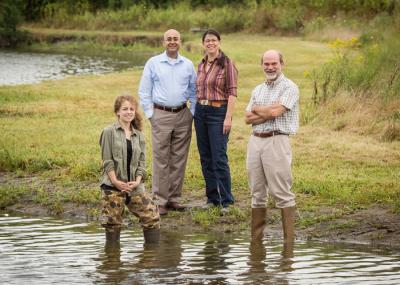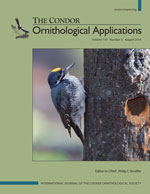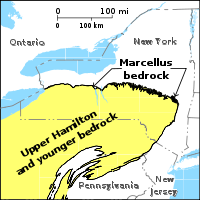 River otters have made a remarkable comeback in the last few decades, particularly in Illinois, as we reported recently. However, those Illinois river otters have significant amounts of long-banned chemicals — such as PCBs and DDE (a chemical that results from the breakdown of DDT) — in their tissues, a recent study from the Illinois Natural History Survey has found.
River otters have made a remarkable comeback in the last few decades, particularly in Illinois, as we reported recently. However, those Illinois river otters have significant amounts of long-banned chemicals — such as PCBs and DDE (a chemical that results from the breakdown of DDT) — in their tissues, a recent study from the Illinois Natural History Survey has found.
A press release from the University of Illinois reveals that for one chemical, the concentrations were higher in the otters now than they were when the chemical was in legal use:
The researchers were surprised to find that average concentrations of one of the compounds they analyzed, dieldrin — an insecticide (and byproduct of the pesticide aldrin) that was used across the Midwest before it was banned in 1987 — exceeded those measured in eight river otters collected in Illinois from 1984 to 1989. Liver concentrations of PCBs and DDE (the latter a breakdown product of the banned pesticide DDT) were similar to those in the earlier study, the release says.
Scientifically, this is a mystery still to be solved. Were the chemicals used long after they were banned? Did it take decades for the chemicals to climb the food chain from algae to top predator? Are female otters passing the contaminants to their offspring in their milk?
But for wildlife managers, it has a lesson useful right now. When trying to find causes for unknown population declines, don’t dismiss the effects of toxic chemicals just because those toxic chemicals were banned from use decades ago.
The University of Illinois press release.
The paper, in the journal Ecotoxicology and Environmental Safety. It is a free access journal.
Photo: Samantha Carpenter (left), a wildlife technical assistant with the Illinois Natural History Survey (INHS); Kuldeep Singh, pathobiology professor at the U. of I. Veterinary Diagnostic Laboratory; Nohra Mateus-Pinilla, an INHS wildlife veterinary epidemiologist; and U. of I. animal sciences professor Jan Novakofski found that Illinois river otters are contaminated with banned pesticides and PCBs. Credit: L. Brian Stauffer
 It has bird week here at State Wildlife Research News, but Environmental Health News is dedicating months to articles reflecting on birds and environmental health. The publication’s Winged Warnings series will contain 16 articles when it concludes in October.
It has bird week here at State Wildlife Research News, but Environmental Health News is dedicating months to articles reflecting on birds and environmental health. The publication’s Winged Warnings series will contain 16 articles when it concludes in October.
 In honor of two major reports on bird conservation released last week, it is going to be bird week here at State Wildlife Research News. First, the science journals. If the State of the Birds has you wondering what and where your state can be doing bird conservation better, the
In honor of two major reports on bird conservation released last week, it is going to be bird week here at State Wildlife Research News. First, the science journals. If the State of the Birds has you wondering what and where your state can be doing bird conservation better, the River otters have made a remarkable comeback in the last few decades, particularly in Illinois,
River otters have made a remarkable comeback in the last few decades, particularly in Illinois, 
